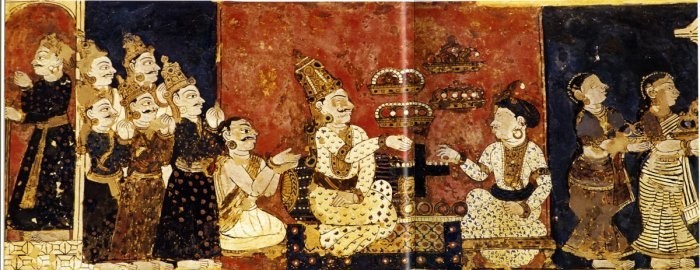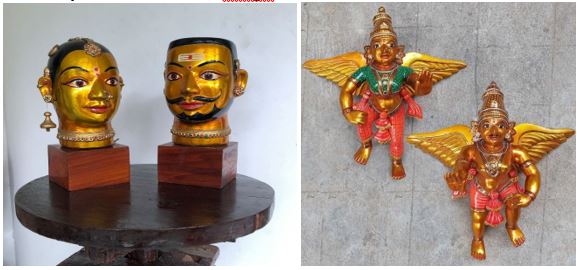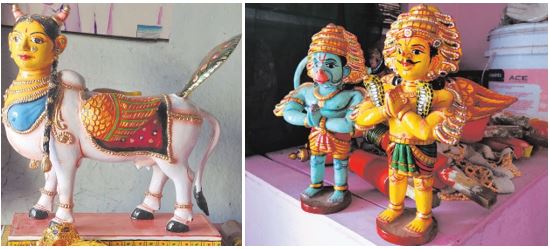The art form originated during the rule of the Vijaynagara Empire when kings invited crafts people from across India to come and work in capital Hampi. The early practitioners of Kinnala art, called ‘Çhitragars’ (which literally means the one who draws and paints), were painters of temples and palaces in Hampi. The famous mural paintings in the Pampapateshwara Temple, and the intricate work on the wooden chariot at Hampi, were completed by ancestors of the Kinnala artists of today.
Kinnala Art
Kinnala Art is a relatively unknown and ancient Indian art form dating back to the 15th-16th centuries. It comes from a village called Kinhal in the Koppal district of Karnataka, India.
Background
India is home to different art forms, which survived through time. Diverse and distinct, these art forms that originate from different corners of the country, are representative of India’s rich culture and history.
The Kinnala art form is a craft that originated during the Vijayanagar empire and dates back nearly 700 years. It originated in a village called Kinhal, in Koppal district of North Karnataka, India. From the exquisite carvings of the famous Hamp chariot from the 15th-16th century, to the and the mural paintings in the Pampapateshwara temple the Kinnala art form can be seen in various places of historical significance in the region.
The Origin: The story behind the story
Creating religious idols has always been the forte of these artists, called chitragars, who have passed on their knowledge to the current generation of artisans. Vibrant colours and glossy finish on the Kinnal idols is common to illustrate the godly characters, animals and human characters.
The early practitioners of Kinnal arts, were painters of temples and palaces in Hampi, Karnataka. This art was patronized by the kings of Vijayanagara. Currently, there are only a few families who still keep the tradition alive. The chitragars create idols of Gods, animals, vegetables and fruit replicas.
.png)


.jpg)




